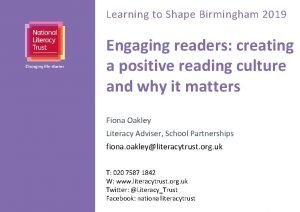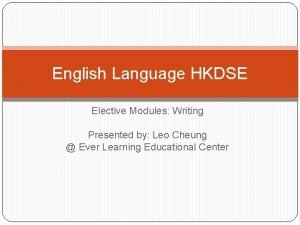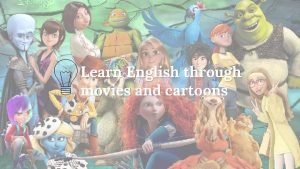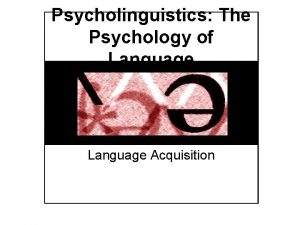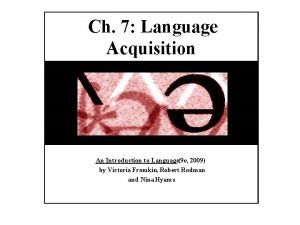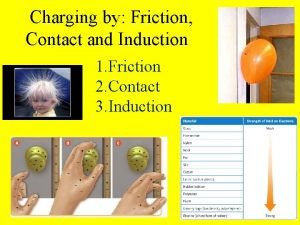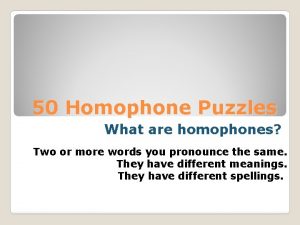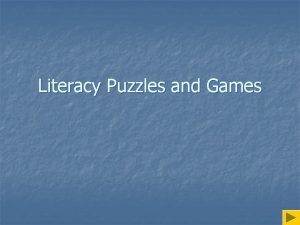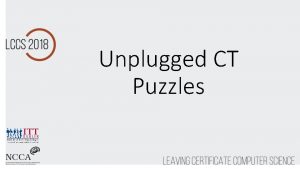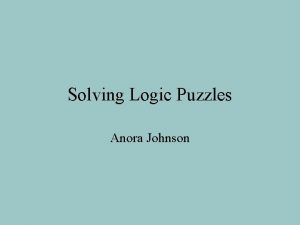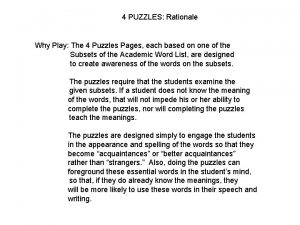Teaching and learning English through puzzles Small children










- Slides: 10

Teaching and learning English through puzzles. Small children in the kindergarten, case study. Ph. D candidate Ardita Dylgjeri Dr. Lenida Lekli

Some of the main issues this presentation will be focused in are: q Why beginning to learn a second language in an early age? q Implementing puzzles as useful teaching - learning methods. q Different puzzles and games used in this process. q Some of our empirical findings and conclusions.

Introduction q Teaching children foreign languages has changed a lot in the recent years. With the broad use of several modern and interesting ways and techniques of teaching English, this process has become easier and more enjoyable for both learners and teachers. Puzzles have been evaluated as funny and at the same time efficient methods of involving small children of kindergarten to learn English, at least some basic vocabulary words and phrases. q This article aims to show and reflect on a triggering and interesting situation that children, especially those of the age 3 -6 years old, are facing: learning foreign languages, especially English, unconsciously. English flows so naturally in their mouths, that sometimes gives the adults the impression that it is their mother tongue. Kids are natural language acquirers. q Being mothers of small children, as well as teachers of English and life-long researchers of contemporary and fruitful methods of teaching foreign languages, we will make an attempt to show, analyze and interpret the usefulness of the puzzles in this case study.

Why beginning to learn a second language in an early age? q There are different studies and teaching and learning methods which reveal both sides of the argument, either in favour or not in favour of acquiring a second language at an early age. Below, you will find a list of some elements which are considered as crucial advantages of such a process. q Being young faces children with the normal process of acquiring, speaking and understanding their mother language. The interesting thing is that they can make use of the same individual unconscious practises when starting to pick up a second language. q This category of children are not forced to follow certain strict study programs and be further checked and tested for what they will try to learn. As a result of these facts, young kids in kindergartens may be more freely involved in plays and games teaching activities. q Learning a foreign language as a kid basically, helps them have a better pronunciation and feeling for the other country`s language and culture. Culture is the fundamental building block of identity (Lally, 1995), and by acquiring first your mother tongue and culture, then a second language and culture broadens one’s mind and the way he/she conceptualizes the world and own identity.

Implementing puzzles as useful teaching learning methods. q The study was conducted in the kindergarten no 4 in Elbasan, to children aged 3 -6 year olds. q When first taking this challenge, we thought and discussed about not only about the interesting part, but also the difficulties we would face in the process of teaching English as a second language to small children. We were not their real teachers, so the role model we wanted to build with them would be somewhat arduous. q We aimed at being energetic, helpful and be prepared with Plans A, B and C to make the learning process effective and enjoyable at the same time. q Specific objects of everyday usage can be of real help in this process and can increase the children`s attention and integration in this process. q Some of the games or puzzles young children may be involved in are:

1. Colors. They can be considered as the simplest things to be learned in an early age. What we conducted, was bringing toys and games in different colours to the children. Kids may be grouped and placed around a table. They will be firstly told the colours in English by showing them the toys in that corresponding colour. Afterwards, they may be put in a game activity, in which the quicker child first shouts the name of the colour of the toy pointed at. The children who seem to be the shiest or the slowest are not to be discouraged, instead they will be given enough time to memorize and say the colours aloud. Also, several songs on You. Tube are related with theme of colours such as “Learn colours with ice cream soccer balls”, “Let`s learn the colours” etc. The children may get familiar to these rhymes, learn them and sing together with them.

2. Numbers. q This may be challenging because children tend to learn the numbers 1 -10 as a whole. They can normally recite the numbers 1 -10 off by heart but not necessarily know what each number is by itself. Flashcard activities and puzzles are good in this way because a child will have to recognize the form and know the word for the number that goes with the form. Not only that, but children are also encouraged to count objects around them and say the correct corresponding number in English. Following these methods, the children may also listen to funny songs in English as “Five little monkeys, jumping on the bed” to make the whole teaching learning process more enjoyable.

3. Opposites. Antonymic pairs of adjectives are interesting vocabulary elements to be taught to young children in kindergarten. What we did was bringing in the classroom puzzles which contained explicit pictures of opposite concepts. The children are brought to look at them carefully and learn the pairs of antonyms such as: smallbig; sunny-rainy; fat-thin; happy-sad; day-night; in-out; long-short, up-down etc.

4. Learning by doing” methods q The best way for children to gain experiences as a basis for language development is learning by doing. According to Evans: . . . the child is able to perform transformations on materials from the environment (Evans, 1971, p. 235). This means that children should interact with the surrounding physical environment, and then learn how to be mentally related to the concepts. Thus, the children`s ability to be active, selfdeductive and orientated to learn new things from the environment. By being exposed to real life situations, children may learn English best. To further develop this method, some of the study elements that may be included in such a case are: q Learning shapes: triangle, square, circle etc. q Enriching and elaborating basic vocabulary related to the classroom and everyday objects: table, desk, wall, floor etc q Expressing feelings: sad, happy, tired, hungry, satisfied etc. q Naming people`s professions or family and friendship relationships: teacher, pupil, nurse, mother, father, brother, sister etc.

Findings: q This kind of case study was conducted in the Kindergarten no 4 in Elbasan for several weeks. There were 20 small pupils who joined our funny and challenging classes. We tried to accomplish our object by teaching English to children of the age 3 -6 year old for two hours a week. Some of our findings are: q To our surprise, almost every child was eager and interested to carefully listen to what we tried to explain, they were widely involved in our practise activities and attentively imitated the sounds and words they heard either live by us or by listening on the You Tube songs and rhymes on tablets or mobile phones. q By implementing puzzles and games to the teaching and learning process, young kids become actively participants and acquire new terms, concepts and phrases. Although, at first sight, these methods seemed to be just a mere play, they had an immerse contribution in this respect. q The visual resources used in the teaching learning process made the lessons not only interesting and funny, but effective and helpful at the same time by encouraging the pupils to comprehend and use certain words and phrases in English. q The experiment showed that small kids can learn a lot and should be exposed to that kind of study engagement
 Likes dislikes patterns and puzzles grid
Likes dislikes patterns and puzzles grid Stars dogs plowhorses and puzzles
Stars dogs plowhorses and puzzles Learning english through workplace communication writing
Learning english through workplace communication writing Learning english through cartoons
Learning english through cartoons Do children learn through correction and reinforcement?
Do children learn through correction and reinforcement? Do children learn through structured input?
Do children learn through structured input? Eight basic puzzles about financial structure
Eight basic puzzles about financial structure Application of propositional logic in discrete mathematics
Application of propositional logic in discrete mathematics Pith ball puzzles
Pith ball puzzles Coat homophone
Coat homophone Calf homonyms
Calf homonyms
